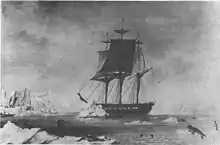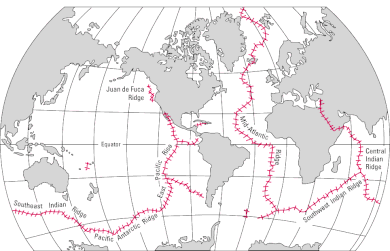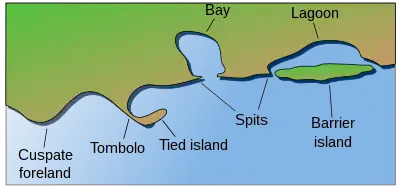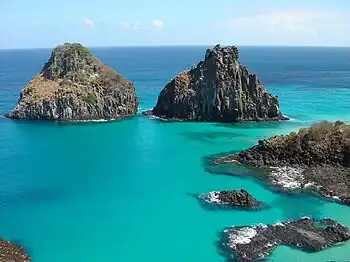The Oceans Portal
A portal dedicated to oceans, seas, oceanography and related topics
– Hover over image and scroll to middle for controls to see more selected panorama images –
Introduction
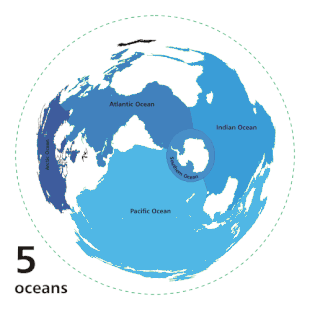 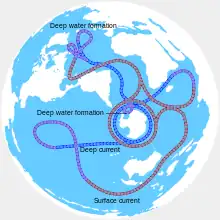 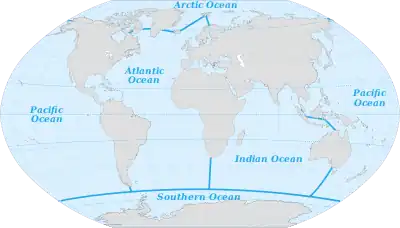 |
| Earth's ocean |
|---|
|
Main five oceans division: Further subdivision: Marginal seas |
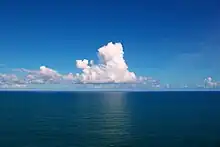
The world ocean (sea) is the body of salt water that covers ~70.8% of the Earth. In English, the term ocean also refers to any of the large bodies of water into which the world ocean is conventionally divided. Distinct names are used to identify five different areas of the ocean: Pacific, Atlantic, Indian, Antarctic/Southern, and Arctic. The ocean contains 97% of Earth's water and is the primary component of the Earth's hydrosphere, thus the ocean essential to life on Earth. The ocean influences climate and weather patterns, the carbon cycle, and the water cycle by acting as a huge heat reservoir. (Full article...)
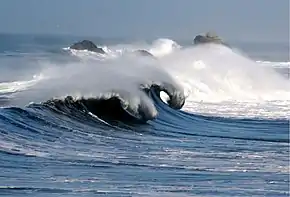
The sea normally refers to the Earth's ocean. The term sea may also refer to marginal seas, second-order sections of the oceanic sea (e.g. the Mediterranean Sea), or certain large, nearly landlocked bodies of water. (Full article...)
Oceanography (from Ancient Greek ὠκεανός (ōkeanós) 'ocean', and γραφή (graphḗ) 'writing'), also known as oceanology, sea science and ocean science, is the scientific study of the oceans. It is an Earth science, which covers a wide range of topics, including ecosystem dynamics; ocean currents, waves, and geophysical fluid dynamics; plate tectonics and seabed geology; and fluxes of various chemical substances and physical properties within the ocean and across its boundaries. These diverse topics reflect multiple disciplines that oceanographers utilize to glean further knowledge of the world ocean, including astronomy, biology, chemistry, climatology, geography, geology, hydrology, meteorology and physics. Paleoceanography studies the history of the oceans in the geologic past. An oceanographer is a person who studies many matters concerned with oceans, including marine geology, physics, chemistry, and biology. (Full article...)
Selected article -
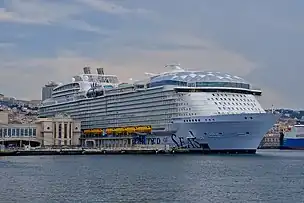
Cruise ships are large passenger ships used mainly for vacationing. Unlike ocean liners, they typically embark on round-trip voyages to various ports of call, where passengers may go on tours known as "shore excursions". They may carry thousands of passengers in a single trip, and are some of the largest ships in the world by gross tonnage (GT), bigger than many cargo ships. Cruise ships started to exceed ocean liners in size and capacity in the mid-1990s; before then, few were more than 50,000 GT. In the decades since the size of the largest vessels has more than doubled. There have been nine or more new cruise ships added every year since 2001, most of which are 100,000 GT or greater. In the two decades between 1988 and 2009, the largest cruise ships grew a third longer (268 m to 360 m), almost doubled their widths (32.2 m to 60.5 m), doubled the total passengers (2,744 to 5,400), and tripled in volume (73,000 GT to 225,000 GT). , the largest cruise ship, Wonder of the Seas, has a gross tonnage of 236,857, is 362 metres (1,188 ft) long, 64 metres (210 ft) wide, and holds up to 6,988 passengers.
Cruise ships are organized much like floating hotels, with a complete hospitality staff in addition to the usual ship's crew. They cater to nautical tourists, with recent vessels being described as "balcony-laden floating condominiums". The "megaships" went from a single deck with verandas to all decks with verandas, and feature ameneties such as theaters, fine-dining and chain restaurants, spas, fitness centers, casinos, sports facilities, and even amusement park attractions. (Full article...)Interesting facts -

- Heather Willauer (pictured) patented a method for removing carbon dioxide (CO2) from seawater, in tandem with hydrogen (H2) removed simultaneously. Willauer has researched catalysts to enable a continuous Fischer–Tropsch process to recombine carbon monoxide (CO) and hydrogen gases into complex hydrocarbon liquids to synthesize jet fuel for Navy and Marine aviation, and fuel for the U.S. Navy's ships at sea.
- The sea cucumber Leptopentacta elongata has a U-shaped or S-shaped body and occupies a burrow in the seabed.
- The POLYGON experiment, conducted in the 1970s, was the first experiment to establish the existence of so-called "mesoscale eddies", giving rise to the "mesoscale revolution" in oceanography.
Selected list articles and Marine habitat topics
| Marine habitats |
|---|
Open ocean |
- List of oceans
- List of ancient oceans
- List of seas
- List of circumnavigations
- List of cruise lines
- List of largest lakes and seas in the Solar System
- List of marine biologists
- List of marine ecoregions
- List of maritime explorers
- List of naval battles
- List of ocean liners
- List of oceanographic institutions and programs
- List of oldest surviving ships
- List of rogue waves
- List of seafood dishes
- List of submarine topographical features
Tasks
 |
Here are some tasks awaiting attention:
|
General images -
Related portals
In the news
- 27 November 2023 –
- The British Antarctic Survey confirms that the world's largest iceberg, A23a, is now leaving the Weddell Sea and drifting into the Southern Ocean after being in the Weddell Sea for more than 30 years. The iceberg is expected to follow the Antarctic Circumpolar Current and continue to drift away from Antarctica. (The Guardian)
- 10 November 2023 – Territorial disputes in the South China Sea, China–Philippines relations
- China imposes "control measures" against Philippine vessels at a contested South China Sea location after a Philippine auxiliary ship entered the area which China deemed as infringing on its sovereignty. (AFP via TOI)
- 9 November 2023 – 2023 Israel–Hamas war
- An unidentified drone strikes a building in the port city of Eilat, after Israel intercepts a ballistic missile over the Red Sea with its Arrow missile defense system. The Yemen-based Houthis claim responsibility, but the Israel Defense Forces blame an unspecified organization in Syria for the strike. (Reuters)
- 1 November 2023 – 2023 Israel–Hamas war
- Israel deploys Sa'ar-class corvettes to the Red Sea in response to missile and drone attacks from Yemen. Israeli National Security Council official Tzachi Hanegbi says that the Houthi attacks on Israel are "intolerable". (Reuters)
- 29 October 2023 – Russian invasion of Ukraine
- Russia says that it has shot down 36 Ukrainian drones over the Black Sea and the Crimea. (DW)
WikiProjects
- WikiProject Oceans
- WikiProject Limnology and Oceanography
- WikiProject Marine life
- WikiProject Cetaceans
- WikiProject Fishes
- WikiProject Sharks
- Related WikiProjects
- WikiProject Arthropods
- WikiProject Fisheries and Fishing
- WikiProject Lakes
- WikiProject Rivers
Topics
Categories
Associated Wikimedia
The following Wikimedia Foundation sister projects provide more on this subject:
-
 Commons
Commons
Free media repository -
 Wikibooks
Wikibooks
Free textbooks and manuals -
 Wikidata
Wikidata
Free knowledge base -
 Wikinews
Wikinews
Free-content news -
 Wikiquote
Wikiquote
Collection of quotations -
 Wikisource
Wikisource
Free-content library -
 Wikiversity
Wikiversity
Free learning tools -
 Wiktionary
Wiktionary
Dictionary and thesaurus
Admiralty law
| Admiralty law |
|---|
| History |
| Features |
| Contract of carriage/Charterparty |
| Parties |
| Judiciary |
| International conventions |
| International organisations |
Need assistance?
Do you have a question about oceans, seas or oceanography that you can't find the answer to? Consider asking it at the Wikipedia reference desk.
External media
- World Ocean Database and World Ocean Atlas Series – from the U.S. National Centers for Environmental Information, National Oceanic and Atmospheric Administration. Includes the World Ocean Atlas.
- European Atlas of the Seas – the European Atlas of the Seas, from the European Commission
- NOAA Research – NOAA research news, Oceanic and Atmospheric Research (OAR)
- Ocean Research – from The World Ocean Observatory
- Ocean Biodiversity Information System – "a global open-access data and information clearing-house on marine biodiversity for science, conservation and sustainable development"
-
 List of all portalsList of all portals
List of all portalsList of all portals -
 The arts portal
The arts portal -
 Biography portal
Biography portal -
 Current events portal
Current events portal -
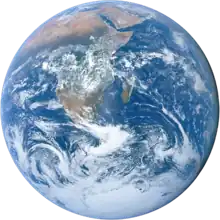 Geography portal
Geography portal -
 History portal
History portal -
 Mathematics portal
Mathematics portal -
 Science portal
Science portal -
 Society portal
Society portal -
 Technology portal
Technology portal -
 Random portalRandom portal
Random portalRandom portal -
 WikiProject PortalsWikiProject Portals
WikiProject PortalsWikiProject Portals
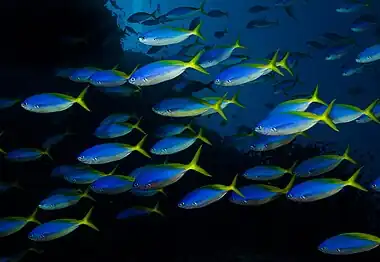
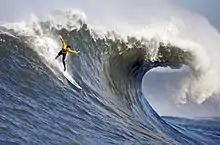
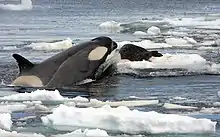
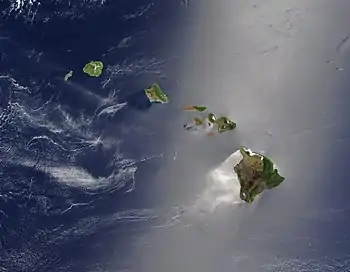

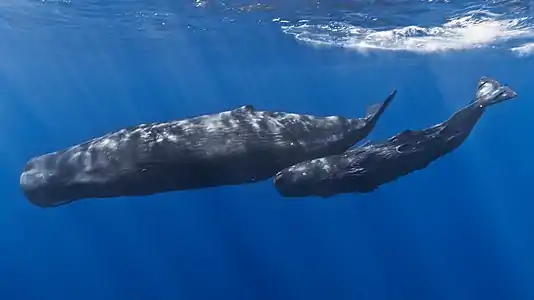


.jpg.webp)
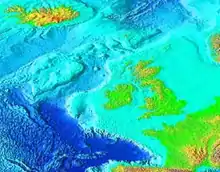
.jpg.webp)
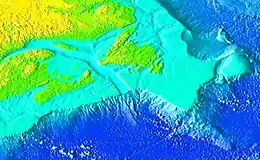

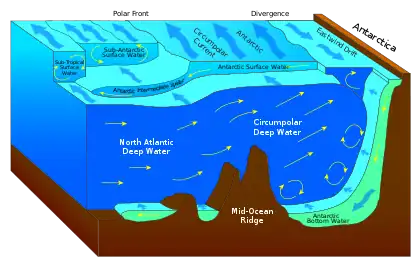


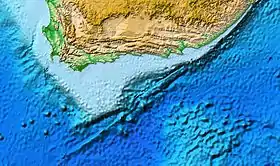
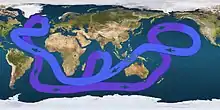



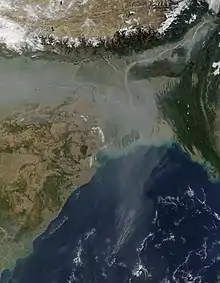
_peak_intensity.jpg.webp)

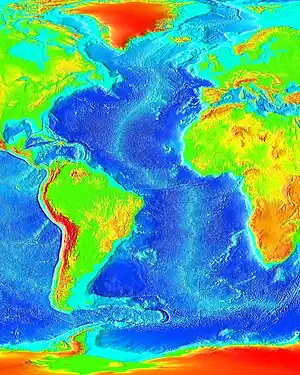
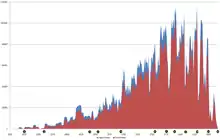
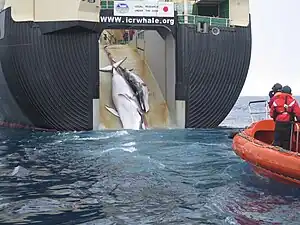
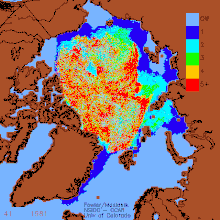
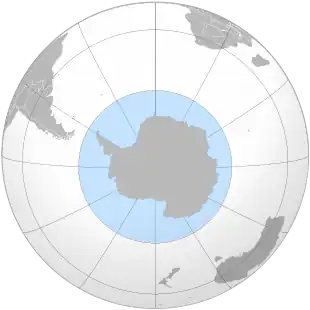
.png.webp)
![Image 26"Terres Australes" [sic] label without any charted landmass (from Southern Ocean)](../I/Geography_world_map.jpeg.webp)
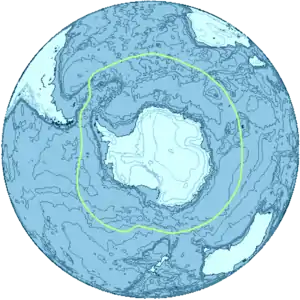

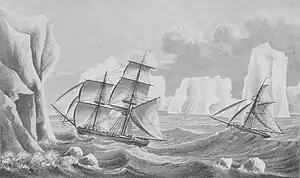
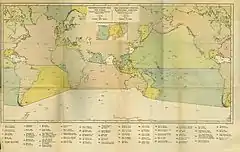


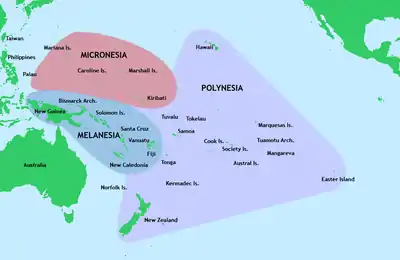


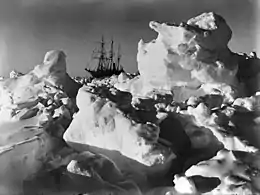
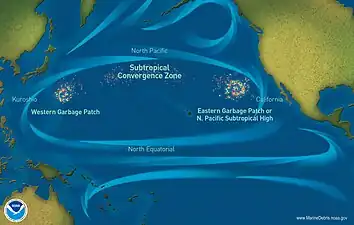
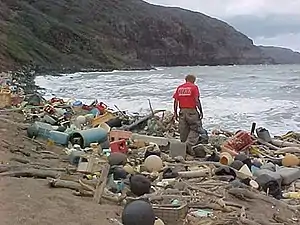

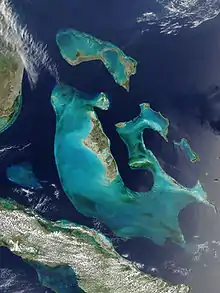


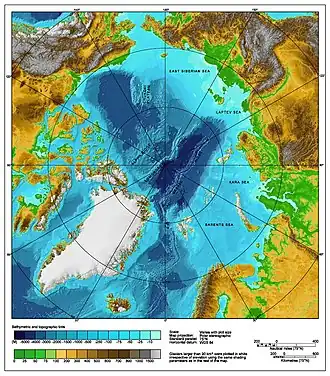

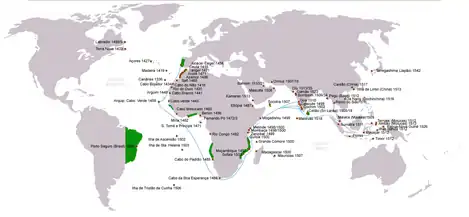
.jpg.webp)
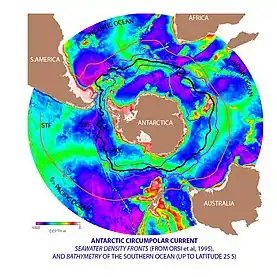

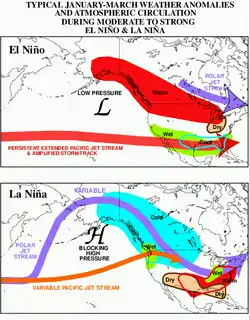
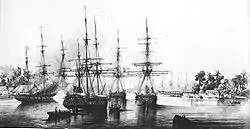
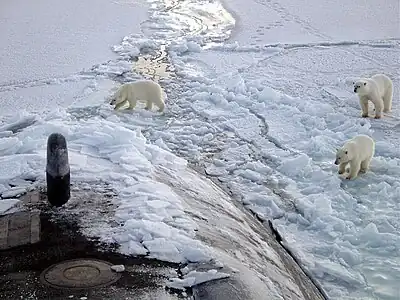
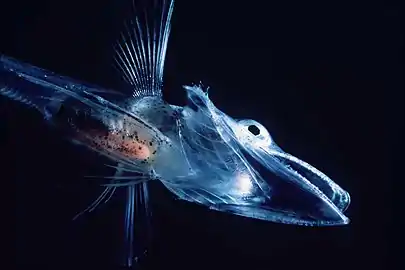
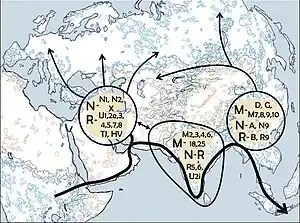
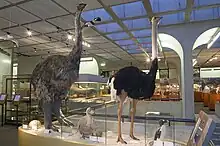
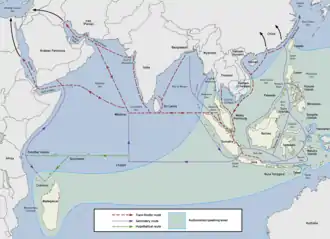
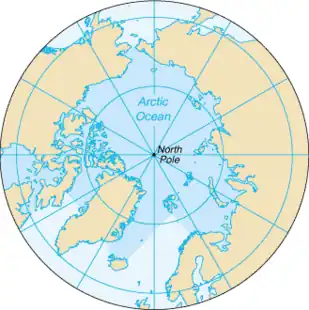
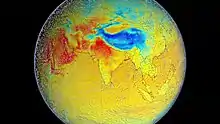

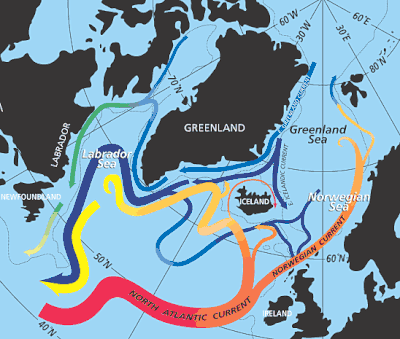

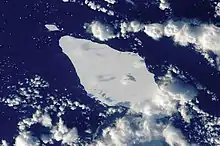
.jpg.webp)
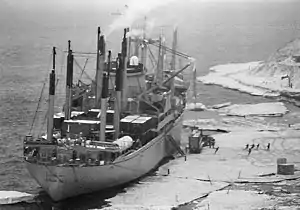

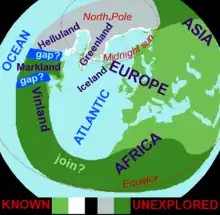
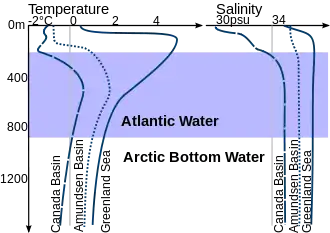
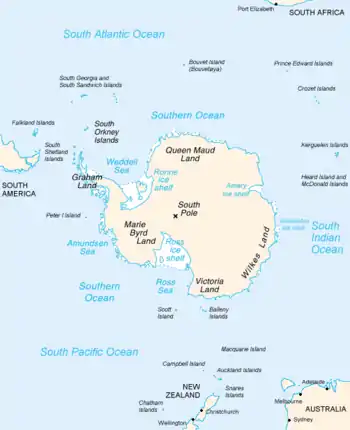

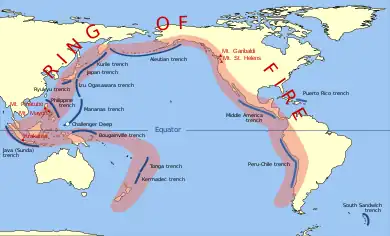
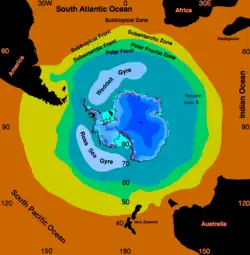
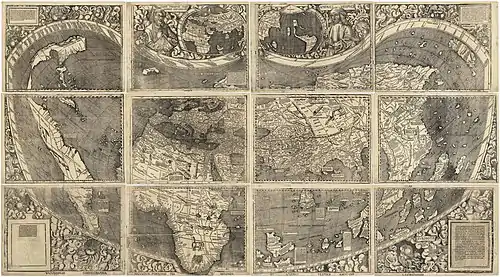
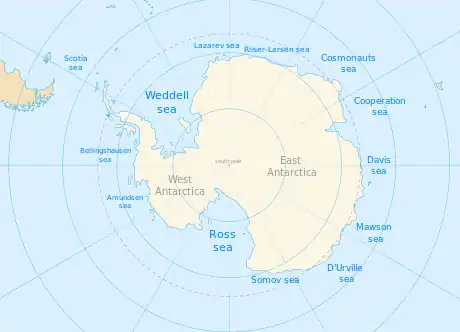

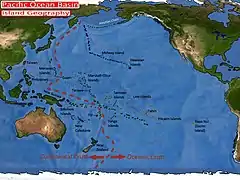
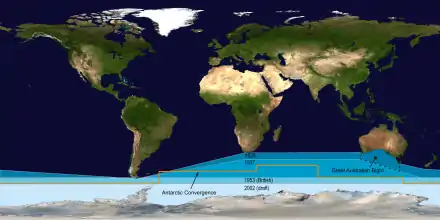

_over_the_Marianas_Trench%252C_23_January_1960_(NH_96797).jpg.webp)
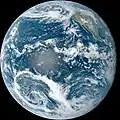
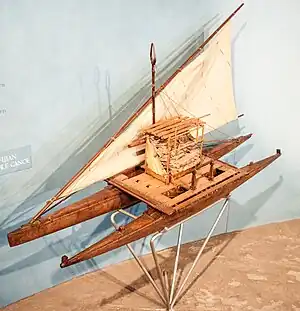


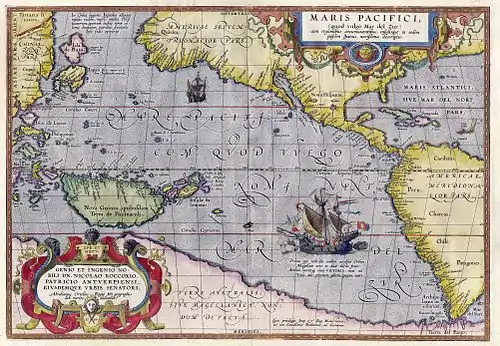

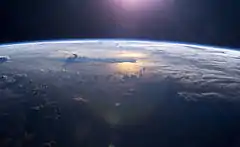
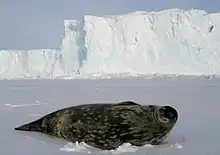

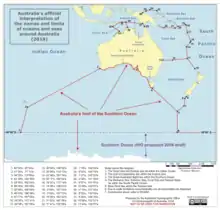





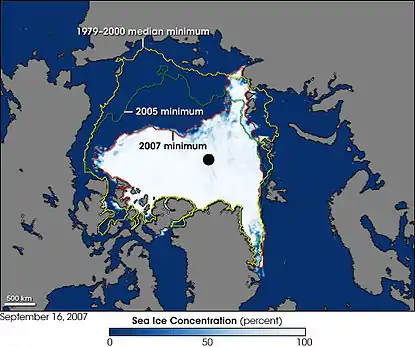
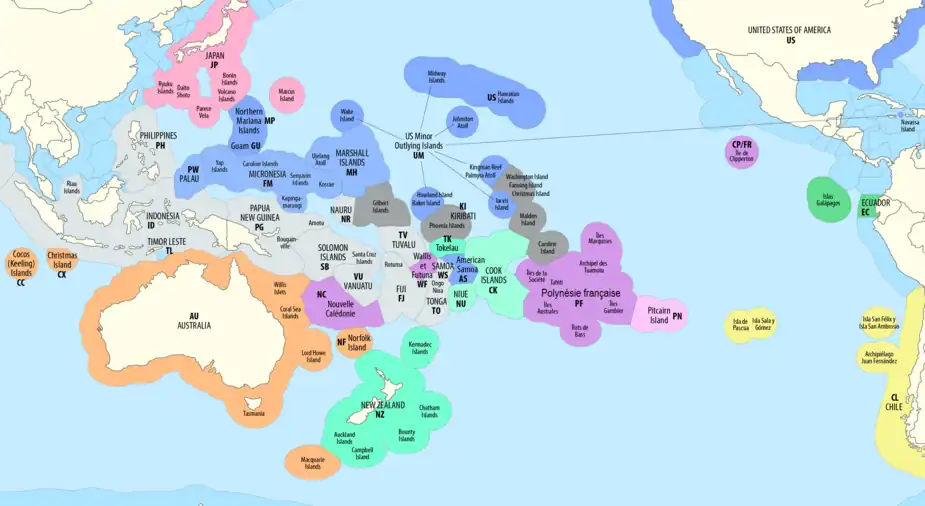
.jpg.webp)

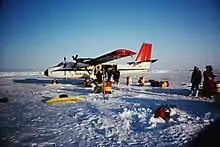
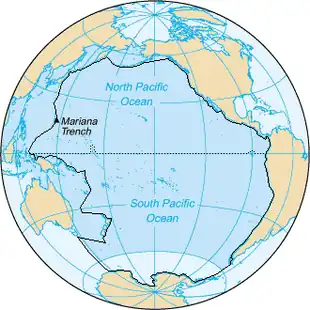
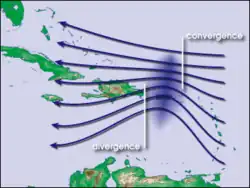
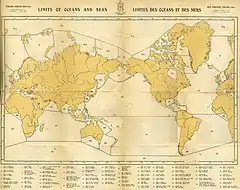
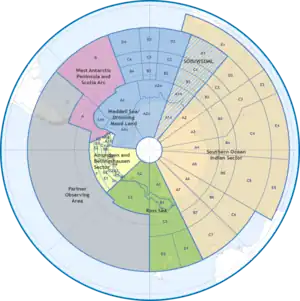
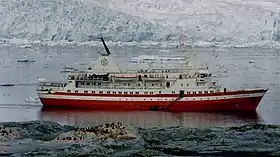
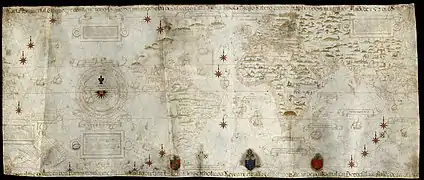
.jpg.webp)
.jpg.webp)
